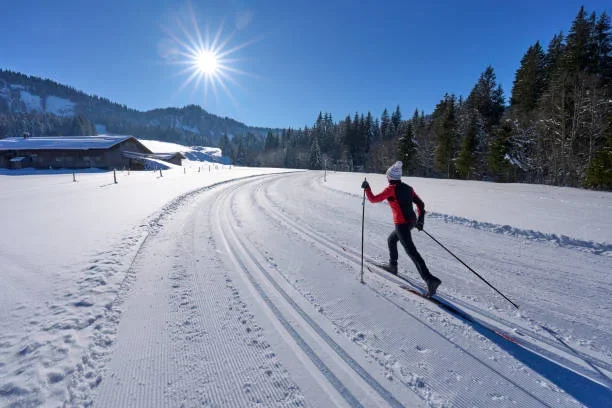From the pristine trails of the Nordic countries to the snowy landscapes of North America, cross-country skiing has long been a favorite winter sport for outdoor enthusiasts. Whether you’re gliding through a peaceful forest or participating in a competitive race, it offers both excitement and relaxation. This guide will cover the key aspects of cross-country skiing, including equipment, clothing, techniques, and its prominence in the Olympics.
Table of Contents
What is Cross Country Skiing ?
It is a winter sport where participants use skis to travel across snow-covered terrain. Unlike downhill skiing, cross-country skiing takes place on flat or gently rolling terrain, with skiers propelling themselves forward using ski poles in a gliding motion.
This sport originated in Scandinavian countries, where it was initially used as a mode of transportation over snowy landscapes. Over time, it has evolved into a competitive sport, with various techniques, including classic and freestyle (skating), allowing athletes to race on natural trails or specially prepared courses.
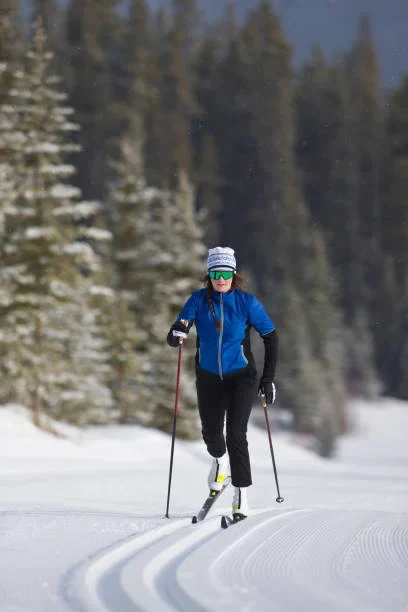
Cross Country Skiing Olympics
It has been a staple of the Winter Olympic Games since its debut in 1924. It consists of both individual and team events, with distances ranging from sprints to endurance races. The sport has grown in popularity, especially in Nordic countries like Norway, Sweden, and Finland.
Here are some key events in Olympic:
- Sprint Races: Short-distance races, usually around 1-2 kilometers, where speed and technique are crucial.
- Distance Races: Longer events ranging from 10 to 50 kilometers, testing the endurance and stamina of athletes.
- Relays: Team-based events where skiers take turns completing a portion of the total distance.
- Mass Start: Races where all participants begin at the same time, and the first to cross the finish line wins.
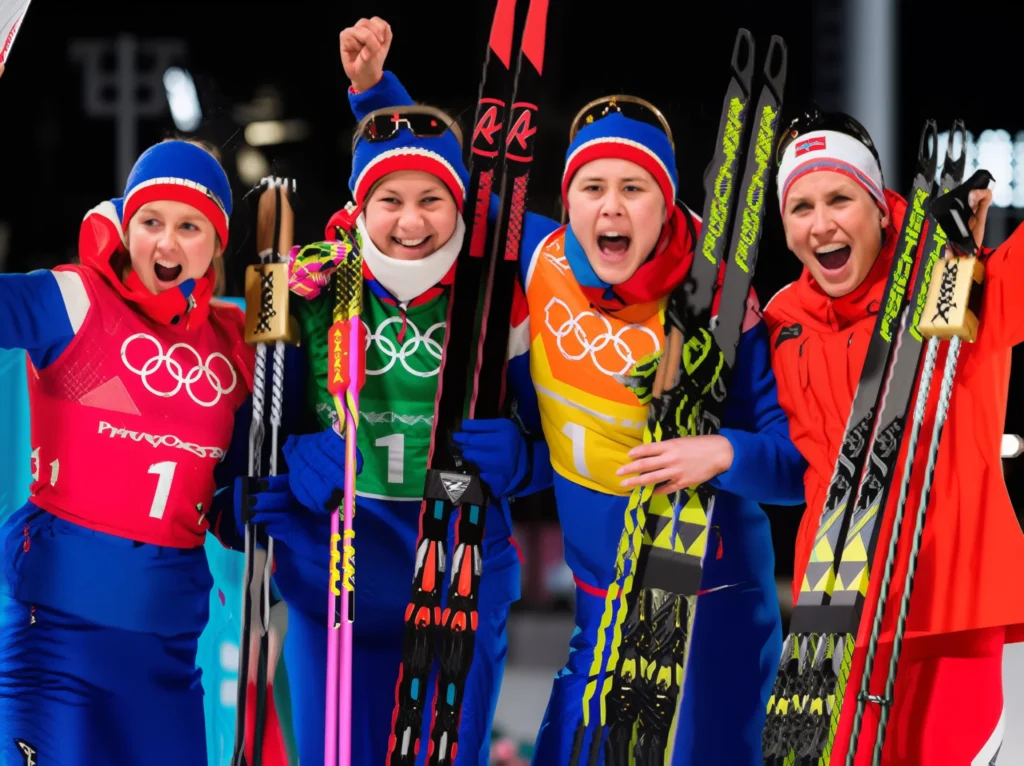
Statistical Insights:
It is a dominant sport in countries like Norway, where athletes often secure gold medals in these events. Norway’s Johannes Høsflot Klæbo and Marit Bjørgen have been standout performers in the Olympics.

What to Wear for Cross-Country Skiing
Proper clothing is essential for a comfortable and enjoyable skiing experience. Here are the key clothing items :
- Base Layer: A moisture-wicking base layer (thermal tops and bottoms) keeps sweat away from the skin.
- Mid Layer: A light fleece or insulating layer adds warmth without restricting movement.
- Outer Layer: A windproof and water-resistant jacket is essential for protection against the elements.
- Gloves: Thin, breathable gloves that allow dexterity for handling ski poles.
- Hat or Headband: Keeps ears warm without causing overheating, especially when exerting energy.

Cross-Country Skiing Equipment
The right equipment is crucial for both performance and safety. Here’s a breakdown of the essentials:
- Skis: Lightweight and long skis designed for gliding over snow. There are specific skis for different techniques (classic and skate).
- Ski Poles: Longer poles that help with propulsion and balance.
- Bindings: Connect the skier’s boots to the skis. In cross-country skiing, bindings allow for more freedom of movement than downhill skiing.
- Boots: Specially designed boots that provide support while allowing flexibility for the skier’s stride.
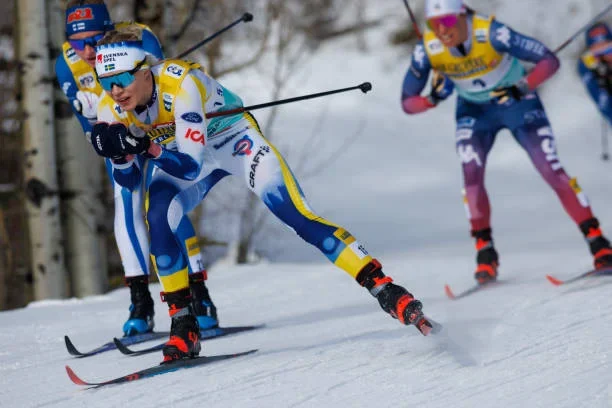
Cross-Country Skiing Pants
While skiing, your pants need to be flexible, durable, and weather-resistant. These pants are typically made from breathable, water-resistant materials, ensuring comfort while you glide. Here are the key features:
- Breathability: Essential for regulating body temperature during intense activity.
- Stretch: Pants should allow for a full range of motion.
- Windproofing: Protects against harsh winds on exposed trails.
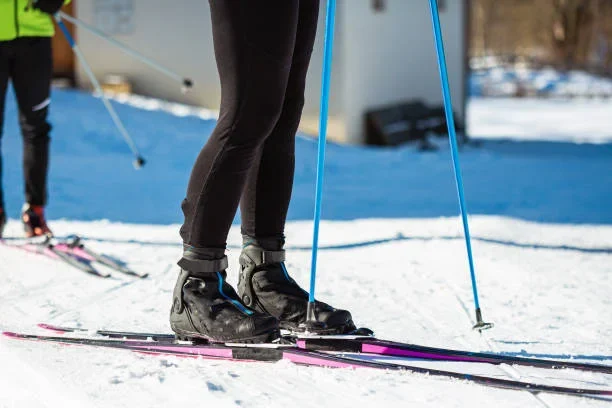
Statistical Data: Cross-Country Skiing Participation
Below is a chart showing the growth in participation in cross-country skiing from 2010 to 2025. It highlights the increasing interest in the sport over the past decade.

Climate Change and the Skiing Industry’s Struggles
As the community grows, it is increasingly facing challenges posed by climate change. The skiing industry, including cross-country skiing, is experiencing significant financial losses due to unpredictable snow conditions and warmer winters. With shorter seasons and melting snow, businesses that depend on consistent snowfall are struggling, affecting both the recreational and competitive aspects of the sport. This issue underscores the growing urgency for sustainable practices and adaptation strategies in winter sports. You can read more about the impact of climate change on skiing.
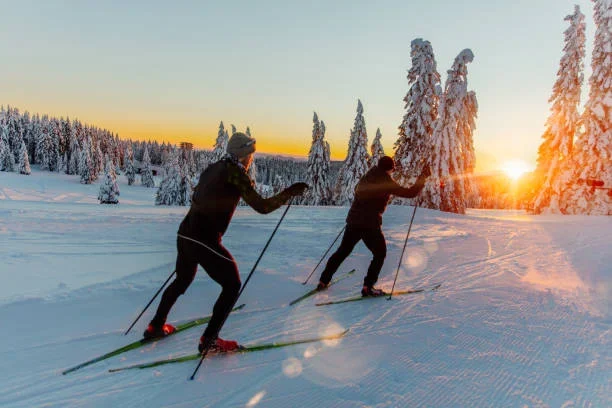
Conclusion
It is more than just a sport; it’s a way to immerse yourself in nature, improve fitness, and challenge yourself. Whether you’re out on the trails for recreation or competing at the highest level, this sport provides an incredible workout and a chance to connect with the outdoors. If you’re considering trying out cross-country skiing, make sure you have the right gear, wear appropriate clothing, and start practicing on beginner-friendly trails. The Olympics may seem far off, but everyone starts somewhere!
FAQ
Cross-country skiing can be challenging for beginners, especially when learning the techniques. However, with practice and proper training, it becomes easier and enjoyable. It focuses more on endurance, rhythm, and technique rather than speed and steep terrain.
The key equipment includes skis (either classic or skate style), ski poles, boots, and bindings. The choice of gear depends on the type of cross-country skiing (classic or skate) and your experience level. Be sure to select lightweight, durable equipment for optimal performance.
Cross-country skiing is an excellent cardiovascular workout that improves endurance, strength, and flexibility. It engages multiple muscle groups and offers the opportunity to connect with nature while enjoying the outdoors.
Climate change is increasingly impacting winter sports, including cross-country skiing, by reducing snow coverage and shortening seasons. Warmer winters and erratic snowfall patterns are causing financial losses for ski resorts and affecting the availability of suitable trails for skiing.






